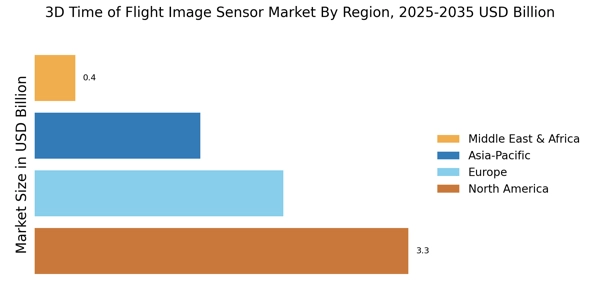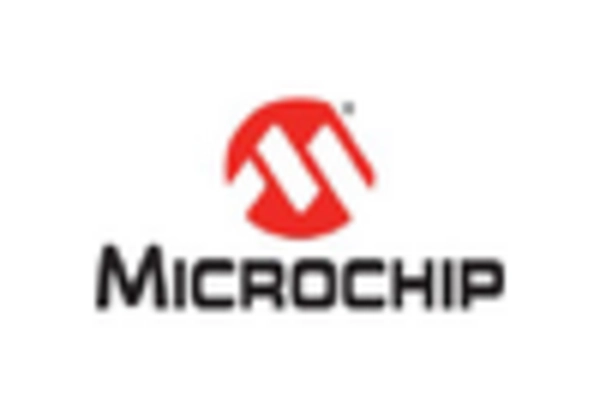Healthcare Innovations
The healthcare sector is increasingly adopting 3D Time of Flight Image Sensor Market technologies for various applications, including medical imaging and patient monitoring. These sensors facilitate non-invasive procedures, allowing for accurate depth measurements and improved diagnostics. The market for medical imaging is projected to expand significantly, with a notable increase in the use of 3D imaging techniques in surgical planning and rehabilitation. Furthermore, the ability to capture real-time data enhances patient care and monitoring, which is crucial in today's healthcare environment. As healthcare providers seek to improve outcomes and reduce costs, the integration of 3D sensors is likely to play a vital role in the evolution of medical technologies, thereby driving market growth.
Robotics and Automation
The rise of robotics and automation is a key driver for the 3D Time of Flight Image Sensor Market. These sensors are essential for enabling robots to perceive their environment accurately, facilitating tasks such as navigation, object recognition, and manipulation. Industries such as manufacturing, logistics, and agriculture are increasingly deploying robotic solutions to enhance efficiency and productivity. The market for industrial robots is expected to grow at a robust pace, with projections indicating a CAGR of over 15% in the next few years. This growth is fueled by the need for automation in various sectors, and the integration of 3D sensors is crucial for the development of advanced robotic systems. As the demand for automation continues to rise, the role of 3D Time of Flight sensors in robotics will likely expand, further propelling market growth.
Integration in Smart Devices
The integration of 3D Time of Flight Image Sensor Market in smart devices is rapidly evolving. As manufacturers seek to enhance user experience, these sensors are increasingly embedded in smartphones, tablets, and wearables. The demand for augmented reality (AR) and virtual reality (VR) applications is driving this trend, as 3D sensors provide depth perception and spatial awareness. In 2025, the market for AR and VR is projected to reach substantial figures, indicating a robust growth trajectory. This integration not only improves functionality but also enhances security features, such as facial recognition, which is becoming a standard in modern devices. Consequently, the proliferation of smart devices equipped with 3D Time of Flight sensors is likely to propel the market forward, creating new opportunities for innovation and competition.
Advancements in Automotive Technology
The automotive sector is witnessing a transformative phase with the incorporation of 3D Time of Flight Image Sensor Market technologies. These sensors are pivotal in enhancing safety features, such as collision avoidance systems and adaptive cruise control. As vehicles become increasingly autonomous, the need for precise depth sensing is paramount. The market for automotive sensors is expected to grow significantly, with estimates suggesting a compound annual growth rate (CAGR) of over 20% in the coming years. This growth is driven by regulatory mandates for advanced driver-assistance systems (ADAS) and consumer demand for safer vehicles. The integration of 3D sensors not only improves vehicle safety but also contributes to the overall efficiency of transportation systems, indicating a promising future for the automotive applications of these technologies.
Emerging Applications in Security Systems
The security sector is experiencing a paradigm shift with the adoption of 3D Time of Flight Image Sensor Market technologies. These sensors enhance surveillance systems by providing accurate depth information, which is critical for identifying and tracking individuals in various environments. The market for security cameras is projected to witness substantial growth, driven by increasing concerns over safety and the need for advanced monitoring solutions. The integration of 3D sensors allows for improved facial recognition and motion detection capabilities, making security systems more effective. As urbanization continues to rise, the demand for sophisticated security solutions is likely to increase, positioning 3D Time of Flight sensors as a vital component in the evolution of security technologies.

















Leave a Comment